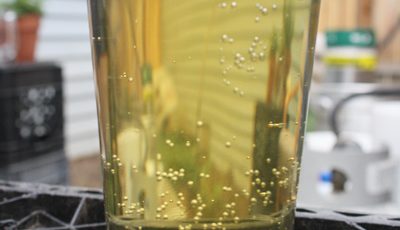Since moving to New Mexico, homebrewing has taken a back seat to everything else.
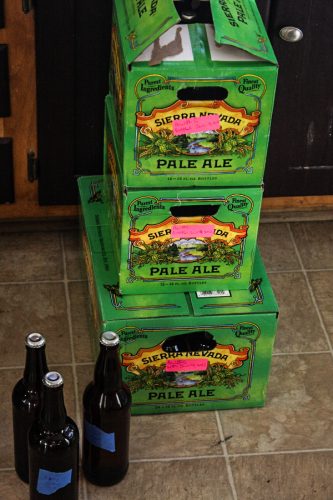
12 packs and 24 packs, recycled, were the best way to store the brew.
I have 15 gallons of cider (in three separate batches) hanging out against one wall in my kitchen, a big bottle of iodopher sitting in my cabinet and a bunch of bottles sitting outside, behind a shed. I even have lactose and corn sugar to get those batches bottled. (I haven’t reinvested in a capper yet).
Unfortunately, with no dish washer to easily sanitize my bottles, I end up putting bottling off time after time after time.
However, when I did have access to a dishwasher, before I moved to kegging (which I cannot recommend enough) and I had friends to consistently drink and brew with, having enough brew on hand was a big issue.
Once we three started brewing, we quickly realized that we liked what we were making, that what we were making took a long time (relatively) and that we needed to be making loads right now for our future selves to have enough to imbibe.
(On another point, if you’re not kegging, getting enough bottles is definitely an issue. Fortunately, when I was living in Reno, there was separated curb side recycling.)
Another of our concerns, as broke young people, was how to maximize our dollars in comparison to our brews. That is, beer is great, but beer can be relatively more expensive to brew, so what about cider?
Cider was easy. Cider was super easy. Cider required less effort and took much easier to get 5-gallon buckets (rather than 6-gallon buckets).
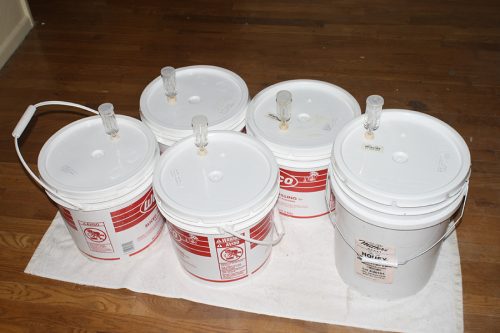
20 gallons of cider in four 4-gallon buckets and one 5-gallon bucket.
So we started making cider, realized we loved it, then had a problem. There was no more cider left. Between ourselves, our friends, the people who lived in the house, the first five gallons of cider were gone in a heartbeat.
The problem was, the cider took a bit of time to age. Unlike beer, that had a pretty quick turnaround time between brewing, bottling and bottle conditioning, cider took a lot longer to really get to that tasty point.
It needed longer to ferment, longer to sit in secondary and longer to mellow out in the bottle.
We then realized we needed a pipeline of cider. We needed to have upwards of 30 gallons (six 5-gallon batches) fermenting at a time, at various stages of completion. When one would be bottled, that meant it was time to start the next batch in the newly opened fermenting bucket.
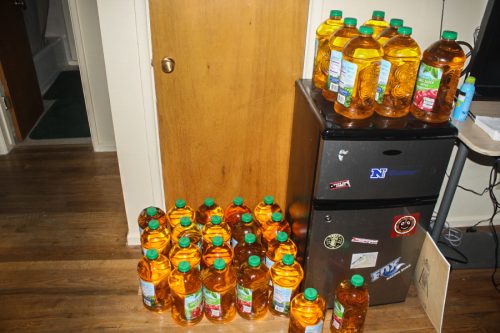
All of the juice needed for five 4-gallon batches.
Since this was long before we started to keg, that meant we created a literal wall of cider and beer in the basement of the house I was living in, a wall (against the wall) made out of 12-packs and 24 packs of cider and beer. Everything was labeled with batch dates.
It was this pipelining of our homebrew that allowed us, and others, to fully enjoy the fruits of our work. We had enough brew. They had enough brew. We had enough brew for parties.
Everybody won. It was super cheap, we learned how to brew better and we always had something home made to drink on hand.
What’s the lesson?
Pipeline your homebrew if your circumstances are similar. Now, with few people to drink with, and no parties to host, I have no need to make a brewing pipeline. But I know, when circumstances change, I’ll be ready to have more than enough brew on hand.
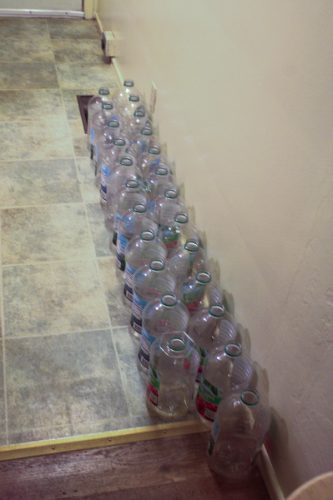
All of the empty juice bottles.
